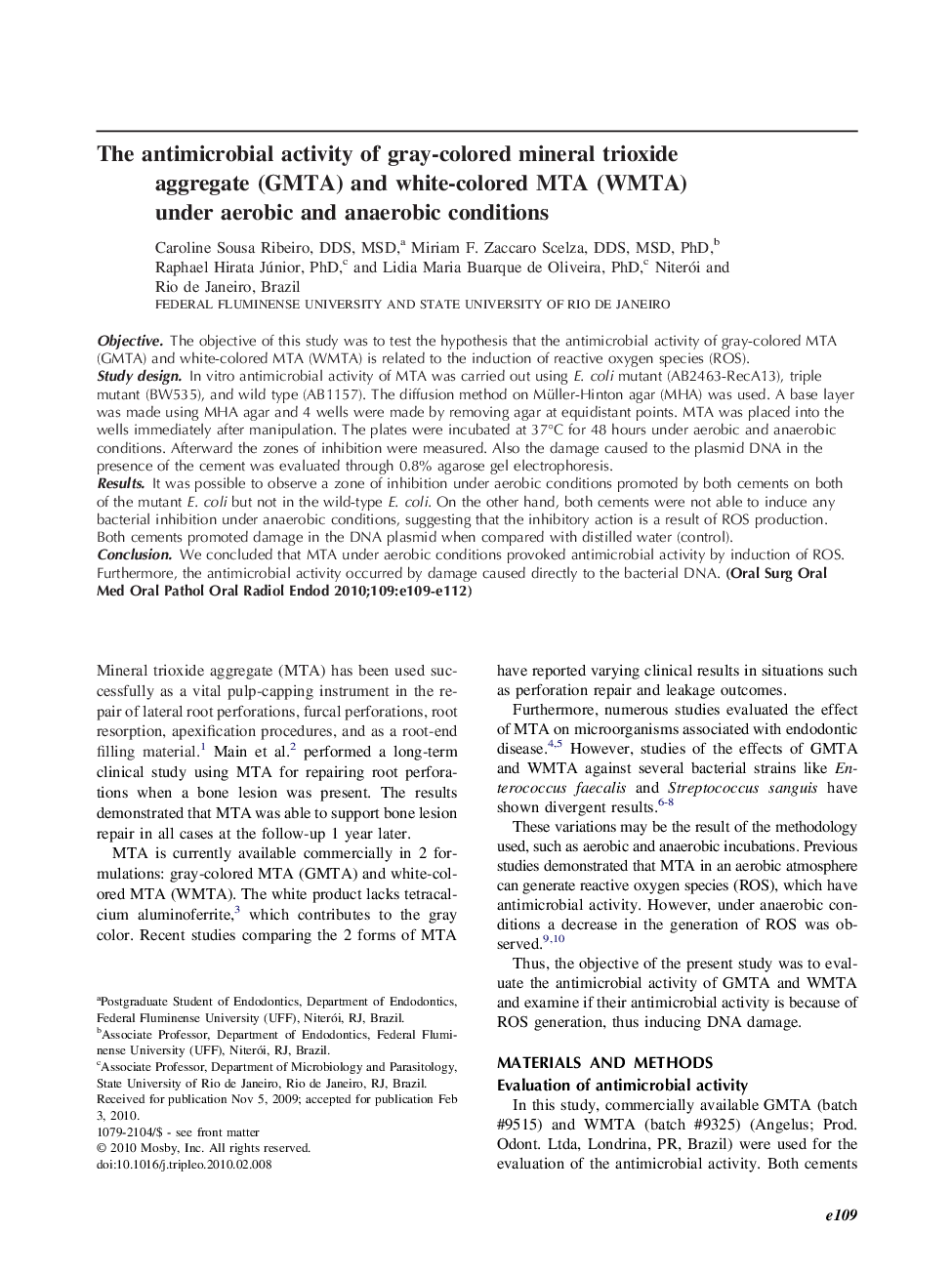| Article ID | Journal | Published Year | Pages | File Type |
|---|---|---|---|---|
| 3167382 | Oral Surgery, Oral Medicine, Oral Pathology, Oral Radiology, and Endodontology | 2010 | 4 Pages |
ObjectiveThe objective of this study was to test the hypothesis that the antimicrobial activity of gray-colored MTA (GMTA) and white-colored MTA (WMTA) is related to the induction of reactive oxygen species (ROS).Study designIn vitro antimicrobial activity of MTA was carried out using E. coli mutant (AB2463-RecA13), triple mutant (BW535), and wild type (AB1157). The diffusion method on Müller-Hinton agar (MHA) was used. A base layer was made using MHA agar and 4 wells were made by removing agar at equidistant points. MTA was placed into the wells immediately after manipulation. The plates were incubated at 37°C for 48 hours under aerobic and anaerobic conditions. Afterward the zones of inhibition were measured. Also the damage caused to the plasmid DNA in the presence of the cement was evaluated through 0.8% agarose gel electrophoresis.ResultsIt was possible to observe a zone of inhibition under aerobic conditions promoted by both cements on both of the mutant E. coli but not in the wild-type E. coli. On the other hand, both cements were not able to induce any bacterial inhibition under anaerobic conditions, suggesting that the inhibitory action is a result of ROS production. Both cements promoted damage in the DNA plasmid when compared with distilled water (control).ConclusionWe concluded that MTA under aerobic conditions provoked antimicrobial activity by induction of ROS. Furthermore, the antimicrobial activity occurred by damage caused directly to the bacterial DNA.
